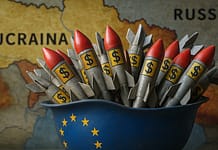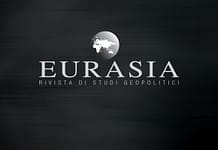Yes to nuclear power. More than a slogan. In Italy this appears to be a declaration of war right now. Yet, this is the name of a group composed of several well-informed people on issues relating to atomic energy, and determined to spread every possible information and discussion on nuclear matters. They decided to open a page, having the same name on facebook, and it has encountered positive and negative comments from many critics. Italy is a particular country where it is increasingly difficult to talk about nuclear power in a manner free from prejudices, ideology and “moral” criticisms. In fact, many consider it as a “political mission”. Indeed, in the midst of indifference and disaster in our country, a group of common Italian people try to think in a scientific manner on key areas of energy sources and research, looking for solutions to a genuine economic and social welfare. This is surely outstanding and marks a major turnaround from the common way of thinking. The group prefers not to be politically labelled. They just want to be considered as Italian citizens who wish a serious, different, and coherent policy to pursue the national interests of our country. We met them to hear what they want and what they expect from politics.
Q: Some time ago you opened a page on the popular social network Facebook to start an open discussion free from ideological dogmatism concerning nuclear energy and all the economic and geopolitical advantages following its implementation in Italy. Your group has expanded over time until it became a source of scientific update on everything concerning atomic research in Italy and abroad. You are even planning a peaceful demonstration for the month of September entirely dedicated to the issues of nuclear power. Please introduce your group to the readers.
A: We are primarily a group of citizens deeply concerned for the Italian energy situation. It is one of the most severe economic problems that our country is facing and is rapidly becoming an increasingly important, especially if the choices that will be implemented herein will not be prudent and farsighted. Among us there are also specialists in the field providing us and our followers with scientific support. One of us works in the field of nuclear research abroad.
There are also people professionally unrelated to this topic, but united by the desire to inform the general public as correctly and extensively as possible on the issue. We surely think that the public is misinformed. Repeating a slogan uncritically is much easier than studying a complex topic. This approach wouldn’t and won’t work. That’s why it’s necessary to promote an informed debate free from ideology and preconceptions. Consider that the press and mass media in Italy are all ideologically aligned, and this causes us great concern. The demo we’re planning for September (on Enrico Fermi’s birthday) aims to let people know our point of view so far artfully distorted by those who opposed the nuclear power.
D: The nuclear issue, as discussed extensively, is almost an ideological taboo in our country. Media campaigns operated by the major environmental groups have now turned the debate into a verbal brawl in every occasion. However they tend to forget that in our country there are several nuclear weapons within NATO deployed some of the most famous military bases in our country, and not far from our borders, France and Slovenia make extensive use of nuclear energy. In such a context, would nuclear power in Italy really be a danger or could it be an opportunity to integrate an international system as done in all industrialized countries (and even some in the developing world, such as India, South Africa or Pakistan) instead?
A: Let’s clarify one thing: nuclear weapons have little or nothing to do with civilian nuclear power. The confusion between the two technologies is the workhorse of anti-nuclear movements, which are ill-informed or disingenuous despite what they claim. Here are some examples: France, like China and India developed their own military programs well before and independently of the civilian programs. For example, the first French nuclear tests, the Gerboise Bleue, dates back to 1960, while the massive development of civilian nuclear power took place only in the mid 70s, following the oil crisis of 1973 as a response to greater energy security .
The mere talk about nuclear energy is taboo in Italy. It’s impossible to make a serious talk about it without getting into a verbal brawl. This occurred already several times. We don’t want to be subdue to this situation. This approach cannot be right and fair in a modern and civilized country, especially considering how important and complex this matter is. United Kingdom’s broadcasters aired several programs explaining to citizens the issues related to energy – such as how to run an electricity network,what kind of difficulties that may arise and how they are addressed. In our opinion, anyone has the right to speak on this but he has to be provided a minimum level of knowledge about the issues. We do not understand how this can be possible in Italy, given the lack of this type of documentaries. Another example: recently the Dutch State Power Board has sent a letter to its customers explaining the reasons behind fares raise; the closure of several German nuclear plants was among these reasons, as its immediate effect was the increase of the price of energy in the electricity market. The Italian local electrical Power Board didn’t do the same.
There are 436 nuclear reactors operating worldwide, and 62 are under construction. Apart from Germany and Italy, whose decisions are based largely on the emotional wave scientifically amplified by a partial and ethically wrong press, the other nations decided to carry on using nuclear power after a testing period to meet the standards of safety following the Fukushima aftermath. Consider, too, that the U.S. NRC has approved the construction of four nuclear units (such Gen.III +) of AP-1000 at the beginning of 2012: two of the Vogtle plant in Georgia and two V.C. Summer plant in South Carolina.
We would like to say that we are not proposing nuclear power as a single source, but as one of the sources of the energy mix among all the possible sources according to their electricity generating capacity.
Finally, the fact that developing countries are considering nuclear power, radically contradicts the anti-nuke advocates’ line (especially after they exhausted their arguments) according to which a nuclear power plant is not economically convenient.
Consider then that the adoption of appropriate nuclear systems would also desalinate sea water, ensuring fresh water reserves in certain specific areas of the planet. This option has already been studied in the past. Mobile units to provide power and drinking water were planned. This is a very important topic especially considering that the next war could take place for control of water resources.
It’s finally worth mentioning that that nuclear energy could be efficiently used to produce hydrogen for use as vehicle fuel, and that hydrogen is not found free in nature in significant quantities. In Japan, for example, it has been studied the industrial feasibility (IS process).
Q: In Italy, one of the most respected and at the same time hated experts in nuclear matter is Fulvio Conti, CEO of ENEL. For almost twenty years, a staunch supporter of the use of nuclear energy for domestic and industrial purposes, Conti has shown more than once what would be the benefits of a plan to diversify energy supplies in environmental, economic and logistical terms. Denigrated by many, but also highly respected for his knowledge and his scientific approach, he needed to review and halt the plans presented at Villa Gernetto in 2010, as part of a Russian-Italian cooperation between ENEL and InterRaoUes, after the referendum last year and after the final fall of the Berlusconi government due to the infamous spread. This showed not only Italy’s strategic and energetic weakness, but also the endemic public ideologization on issues that should be approached scientifically. How could you possibly motivate the existing tiny pro-nuke group of people and what can realistically be done for the return of nuclear power in Italy?
A: Ours is just a battle for the truth. None of us is here to sell nuclear or other stuff, and our passion is purely civic. We receive no funding and we know that we have to deal with the so-called and well funded and supported “environmental” movements, we assume the role of David against Goliath. But we remember Schopenhauer’s words: “The truth passes through three stages. First, it’s ridiculed; second, it’s violently contested; and third, accepted as obvious“.
We do not intend to convince anyone, it’s not our goal, and we do not care about it. We just wanted to clarify for the maximum possible number of people that before discussing about anything, especially if complex and strategically important for the future of the country, one must be clearly informed by reliable sources. This concept should be already clear from the elementary school days but it’s obviously not the case – at least in Italy. We also try to provide with documentation those who want to learn; no politics or ideology whatsoever.
This are technical matters, governed by physical laws and mathematics, and hardly debatable. Nothing to do with feelings or ideologies. Energy has no ideology or political color.
Our “job” after a second referendum against nuclear power has become extremely difficult and we hope that one day someone will take responsibility for the future consequences. However, we are well aware that politicians almost never pay for their mistakes.
Q: The return of nuclear power would produce a number of repercussions in the geopolitical sphere. Just consider the Italian dependency from Russia, the Gulf countries and North Africa and France in the oil and gas market over the last few years, to understand how Italy has always been strongly influenced by other States in its foreign policy choices. After the devastating war in Libya after sanctions that the European Union decided to impose against Iran, the return to nuclear power is the only possible choice to supply the energy demand in a country where the same rates of electricity consumption is increasing alarmingly. Do you believe that there are political or economic pressure groups who try to ride on the social fear and terror media to prevent Italy from acquiring new nuclear power plants and therefore of its energy sovereignty?
A: Let’s start by answering some of the nonsense never going out of fashion: Italy and France, although the latter is the more nuclearized country in the world, consume similar amounts of oil – which is true. However, both countries use oil primarily for road transport. It’s not mentioned that Italy – unlike France – produces more than half of its electricity with gas, consuming over 82 billion cubic meters per year (which is more than France, Switzerland, Portugal, Denmark, Romania and Finland together!).
Let’s recall the history of energy development in our country, the murder of Enrico Mattei, to the indictment of Felice Ippolito (the Enrico Fermi power plant in Trino Vercellese was built in just 3 years – from 1961 to 1964 – despite the 20 years needed according anti-nuke advocates), through Tangentopoli – it’s worth mentioning Giangiacomo Schiavi’s article “The gas killed the atom” published on the Corriere della Sera in April 1993, they proved that the abandonment of the atom was due to bribes bestowed by the lobby of methane gas to the Socialist Party.
The only ones gaining from this situation were those who had interests in oil and gas; in the meantime the local “environmentalists” tied very idyllic relations with ENI and SNAM (Italian companies very active in oil and gas exploration and distribution).
Let’s also remember what happened in Trecate (Novara) on February 28, 1994: the cap of a well in a drilling site in the middle of Ticino’s natural park exploded, following an eruption of oil, gas and sulfuric acid that went on for three days. Transportation in that area was paralysed, a specialist from Houston with extensive experience with the oil wells in Kuwait had to be called. Many people had to leave their homes and the mayor of Trecate forbade the sale and consumption of agricultural products. The uncontrolled flow was stopped only after the collapse of the well’s wall, but the oil spill stretched for 40 square kilometers. All agricultural activities were stopped, and layers of soil on a 5,000 square meters wide area – just like in Chernobyl – had to be stripped. This environmental tragedy has affected the national media for not longer than three days. And now, thanks to the commitment of the “environmentalist” Agip, no one remembers that accident anymore.
“Environmental” movements who oppose the exploitation of the atom are the tip of an iceberg made by the firms operating in oil and methane oligopoly regime; by political parties that obtained easy consensus abusing the fear and misinformation that followed the tragic Chernobyl (and Fukushima) accident; by the government which obviously does not want to give up taxation on oil and gas; and by those political and power lobbies that have thrived for years being financed by the oil lobby (at least three lawsuits in recent years have attempted to shed light on this). How do you think nuclear power can fit in all this?
Moreover, the national media are sponsored directly or indirectly, by persons or groups who have interests in the world’s prominent oil and gas; not many live only by providing information to the general public (indeed, sometimes this is a secondary component of the financial statements). Such an unbalanced system cannot objectively make information and has undoubtedly contributed to the widespread dissemination of radiophobia among the population, as obviously planned by someone.
Q: Looking forward to a possible return to the debate on nuclear energy, less than two years ago ENEL had issued an interactive CD together with EDF, describing in a language easily understandable to the public the normal operation of a nuclear power, from the plant safety regulations taken into account for the construction site until the waste storage, also mentioning what happens abroad. Technically, what is it and how does a nuclear power plant operate?
A: Nuclear technology is a complicated thing, unfortunately, to be fully understood requires without doubt years of study. Sometimes we promote and produce technical documents written as simple as possible. Of course, this requires a certain level of willingness to be informed.
Briefly: a nuclear power plant operates in a very similar manner to a conventional thermoelectric power plant (such as coal): there is a source of thermal energy that generates steam which in turn moves a turbine connected to an alternator, generating electricity, similarly to the a bicycle dynamo, which is then fed into the grid.
In a nuclear facility, the source of this heat is just the energy from the nuclear fission, which is the process that breaks the uranium atom into two lighter atoms, releasing energy. Uranium is relatively abundant in nature (three times as tin). Summing up conventional and unconventional reserves there are about 40 million tons in the world – excluding the sea water, of course. Considering the current consumption, about 65,000 tons per year, so it would be enough for at least 6 centuries.
Supposing a sharp rise in energy demand over the next decades (another point which is not properly considered by most of the general public, although specialized institutes – IIASA for instance – have been studying this phenomenon for years now) the total resources of uranium will be depleted more quickly but not before of one and a half centuries.
By plutonium recycling in fourth generation reactors resources would be multiplied 100 times, then we have the necessary energy for the next centuries, despite the growth in population and consumption.
The treatment of nuclear waste is not trivial indeed: but there are already adequate solutions such as geological disposal sites, as implemented by the Swedes (at Forsmark) and French (in Bure), for example. Someone of us have personally visited some of these sites. We have then a direct experience. Let’s not forget about the technologies under study on nuclear transmutation, the technology that allows you to transmute long-term radioactive elements into elements having a much shorter lifetime, “incinerating” the most dangerous elements.
We would like to mention the SCK-CEN (the Belgian agency in charge of research, based in Brussels) “MYRRHA” project, which is an experimental facility to test the feasibility of a subcritical reactor powered by a particle accelerator (roughly the idea of Prof. Rubbia), which should be realized at Mol, Belgium. The plant will be used for several research projects, including the technical feasibility of waste transmutation mentioned above, the research on materials for Generation IV reactors, the nuclear fusion technology, the production of silicon for renewable applications by means of neutron irradiation, the radioisotope production for nuclear medicine (very important for certain medical applications. This area is at risk due to the phasing out of the reactors dedicated to their production due to their aging). The Belgian government promised to finance 40% of costs if there are lenders covering the remaining investment. The total investment sums up to 1 billion euros – surely a considerable amount of money, unless you compare it with the hundreds of billions spent on the installation of photovoltaic panels, which produce only a small percentage of our needs. But finding the lenders seems quite difficult. This is the technique used by the anti-nuke movements: letting a branch die, then cut it with the excuse that it is dead. We’re getting fed up of sitting down watching the show; we’re now going to report these facts publicly.
Q: You had mentioned the difficult condition in which the industry is the production of radionuclides for nuclear medicine. Could you explain this further to make it more understandable to the public?
A: Not only for nuclear medicine. Radionuclides are also used in many research sectors (including environmental research), production process optimization projects, or in measurements.
As mentioned, the world production of these radionuclides relies on a bunch of reactors, some of which are close to the decommissioning phase.
In an interview a few years ago, Christopher O’Brien, Director of the Canadian Nuclear Medicine Society, spoke about the dramatic consequences of the forced shutdown (November 2007) of the Chalk River reactor in Canada which, despite its over 50 years of operations, produces 40% of the world molybdenum (from which we extract technetium – one of the most widely used radioisotopes not only in nuclear medicine) supply. The reasons for the forced shutdown were completely “bureaucratic”. They weren’t due neither to a malfunction nor to an accident.
There were “positive” consequences too. One of them was the introduction of an additional criterion to subdue the forced shutdown to: before ordering the shutdown, one has to verify the produced stock and the alternative sources of supply. Another positive consequence was the growing awareness of the need for greater coordination and global cooperation between the reactor operators. The reader must bear in mind that the reactor in Petten (Netherlands) produces approximately 35% of global demand for molybdenum. Therefore, three quarters of the world supply relies on two single reactors in operation for over 40 years. The installation of such a reactor has understandably positive effects such as a decreasing dependence on foreign supply, an increase in employment of highly specialized workers as well as easier access to the diagnostic and therapeutic nuclear medicine techniques.
So, considering only the medical applications, even if we neglect the important above mentioned positive effects, we must compare the costs arising from the implementation of this structure with the benefits of saving lives. The reader is free to decide which of the two sides is more important to him.
Q: In the world, many industrialized countries – like China or Canada – are experimenting new solutions, and there is already talk of fourth generation nuclear reactors. The energy demand goes hand in hand with economic development, technology and infrastructure, and is obviously increasing. Renewable sources do not seem to be able to supply the demand. In Italy, the draft pre-referendum project involved the development of ten third-generation nuclear power plants. One of the leading arguments of the opponents to nuclear power was and is the morphology of the Italian territory, most of which is seismic. How real is the danger of constructing nuclear plants in Italy and what safety measures could meet the technical requirements?
A: The Generation IV reactors are based on innovative concepts. Research is now very active in this area, and some of us are working on this topic. However we’re talking about machines that will be commercially available not earlier than 2030-2040.
We take advantage of this space to say something which is very well known in the environment, but it’s just too hard to understand for common people: the Generation IV reactors will require some type of fuel, ideally plutonium. Plutonium is not found in nature, but is generated by irradiation of uranium in nuclear reactors today. Moral: In order to activate the reactors of fourth generation reactors we must first have third (or III +, like the ones we were planning to install in Italy or those being installed in China, America, etc …) generation reactors. This is exactly what the French are doing, having properly estimated the future scenarios. Does anybody know why the French are taking our waste then to return it after few decades? The answer is very simple: they extract the plutonium (and we pay them very well for this!) to give us the other radioactive elements (minor actinides and fission products) back, which we cannot use and for which we still need a geological repository. Our great politicians couldn’t plan it better! Keep in mind that we do not speak from hearsay: some of us have personally visited the reprocessing plant at La Hague in Normandy – in which the separation of the various radioactive elements takes place – and are well informed with these facts.
But here are the dangers, real or imagined, on the construction of nuclear facilities in our area. We can start saying that the studies of the possible localization are very complex and detailed, and take into account the population distribution, the seismic areas, the distribution of water resources (they are necessary to cool the core), and the orography. The outcomes of these studies are compared with the list of the suitable sites. We believe that the procedure is adequate, if done wisely and with competence. However these studies were already made in the past and the results are well known.
Building a nuclear power plant in earthquake zone doesn’t mean undergoing higher risks, but facing higher costs to meet the security requirements (required by law!). Remember that the Fukushima plants have withstood the earthquake, although designed for a slightly lower acceleration than those actually occurred, and that the cause of the nuclear accident was the tsunami. Construction standards established by the State are based on historical series during the construction of the plant. They are then updated according to the most serious events.
The earthquake of March 11, 2011, as well as being historically among the strongest of the whole series in Japan, has generated a tsunami wave higher than expected even for an earthquake of this scale. In particular, the 15-meters wave at the port of Fukushima Daiichi was caused by the construction interference of several tsunamis developed by multiple earthquakes due to different faults and to a chain of seismic events: thus, more tsunami waves in Fukushima Daiichi overlapped. This was not the case in the nearby Fukushima Daini plant.
This type of phenomenon had not yet been well evaluated from a scientific perspective, while there is a large ex-post simulation that shows what happened. As we know, earthquakes are not predictable and rules are developed from actual historical knowledge, with some margin added that in many cases has proved invaluable. These aspects too are part of the lessons that (almost) all the world learned from this accident.
TEPCO considered the effects of the Chilean tsunami of May 22, 1960 at the phase of the license request for Fukushima Daiichi. This tsunami consisted in a 3.15 meters high wave in the port of Onahama. After the publication of the Tsunami Assessment Methods for Nuclear Power Plants in Japan produced by the Japan Society of Civil Engineers in 2002, TEPCO voluntarily re-evaluated its basic design, stating that a tsunami based project would bring water level to a maximum of 5.7 meters. Later, in 2006, TEPCO conducted a study on the development of probabilistic analysis of tsunami hazard, using as an example the coast of Fukushima. This study estimated that the probability of an over 6-meters high tsunami wave to occur in the next 50 years was less than a 1%.
Please keep in mind that the installation of Fukushima dates back to the seventies. The new concepts are based on passive systems, i.e. they “defend” themselves according to physical principles which would work automatically in case of accident, without the need for an external power supply. A very different concept when compared to the first systems. In Italy some wannabe statesmen have made a mess by requesting a shameful referendum, the consequences of which will be observed in a very near future. We have to lay it down brutally because, first, we are totally convinced that people did not know what they voted for and second, some voted for their lowest political reasons.
Fortunately, despite the referendum, the operational activities and research in nuclear engineering did not stop in Italy. We recall very briefly the involvement of our Ansaldo Nucleare in cooperations ranging from the disposal of radioactive waste at Chernobyl, and together with ENEA, the ELSY project which aims to achieve a lead reactor (fourth generation) .
Unfortunately science is not democratic; it does not bend to a referendum. Gathering together to decide that 2 + 2 = 5 is surely possible but ridiculous. Maybe we’re just a bunch of dreamers, but we hope one day these basic concepts will be clear for all.
Q: Another bone of contention is the waste disposal. As we know, waste is subdivided into three types of radioactivity: low, medium and high. While the first two decay over a maximum time of no more than 300 years, high level waste – which is a small percentage – decays in thousands of years. Nuclear power advocates suggest several solutions, and seem to underestimate the problem, although they consider the risk of contamination present in a delicate phase of the nuclear plant’s management. What are the new frontiers in the disposal?
A: As we said above, there are basically two ways: one is already available and being implemented by France and Sweden which consists in the disposal in geologically stable sites, and the other still in the research phase – although very promising – which is the nuclear transmutation in fast spectrum reactors, which is what Gen IV nuclear research is concentrated on nowadays.
In very brief details, we can start saying that the radioactive waste decays, or it’s subject to transformation, and eventually its activity ceases. Therefore, waiting that the radioactivity becomes insignificant (ie, comparable to that of the environment) would be enough. Unfortunately the decay time ranges from microseconds to millions of years. If we contain the waste into barriers that isolate them from the biosphere effectively for appropriate time we can consider this a reasonable solution.
The containers are made of special steel with a thickness of several centimeters, and the waste is vitrified by using volcanic glass type developed on purpose. The potential risk, in fact, is water corroding the container and moving its content into the biosphere, making the radionuclides harmful to life on Earth. The leaching tests show that, even when submerged in water, such glasses release small quantities of radionuclides in time: think of fresh water which must dissolve a piece of glass. First of all, however, water would have to dissolve a few inches of iron, penetrating a few tens of centimeters of bentonite, and then flow into the geological site. Salt mines are particularly indicated as sites because they haven’t been getting water for millions of years. Therefore, the waste is likely to remain there undisturbed for millions of years. During this time it will be incinerated by natural decay. The argument is very complex, but here we wanted to outline the principle by which these things are implemented.
A final word on the technologies for nuclear transmutation: instead of using “slow” neutrons, as it’s done in current reactors, we use “fast” ones (i.e. the ones having maximum energy) to hit the most pernicious waste, this reduces its toxicity of a few thousand times.The goal is to get rid of the need for a geologic repository. We’re not talking about sci-fi, but about technologies being studied and well feasible. According to our knowledge, what was aired a few months ago on a BBC channel was the only documentary on nuclear transmutation worth mentioning. We have no idea whether the Italian TV aired such documentaries, but we’re very confident it didn’t.
Q: Oil, gas and coal have similar risks, but they generate huge amounts of problems mainly related to CO2 emissions. In different areas of the world, from the United States to China, passing through Italy or Great Britain, the pollution linked to mining and extraction is one of the main problems of the past hundred years. Given that the raw materials are far from being exhausted, rethinking their use seems now necessary. We can therefore say that nuclear power could be the solution, or one of the solutions to environmental problems?
A: The nuclear energy source is the one having the greatest concentration of energy among all the sources known to us: 1 cubic meter of gas generates about 4 kWh of electricity, 1 kg of coal generates an average of 2 kWh, 1 kg of fuel Nuclear generates about 400,000 kWh. This concentration also leads to extremely low generation costs. For example, in the US in 2010 the cost per kWh of fuel from a coal plant was about 3 cents, from a gas power plant was about 5 cents, while in a nuclear power plant was less than 0.7 cents.
Undoubtedly nuclear energy has some delicate points, related to safety, proliferation, establishment costs, although much lower than trumpeted by certain lobbies that have artfully exaggerated some aspects. We believe, however, that a prudent and rational use of this source can certainly reduce the pressure on issues related to the environment, to costs, and especially to the availability of resources, contributing perhaps to diminish the violence (wars) resulting from the necessity to obtain the necessary energy resources. Recent events indicate this trend dramatically.
And that’s why we believe that a priori giving up – for lowest ideological, political or personal reasons, is in fact a crime against ourselves and future generations that should have the right to dispose of at least the same amount of energy that we have benefited. Of course to do that we would not need politicians who look after a re-election, but statesmen who look to the future generations – an unfortunately increasingly rare commodity these days. And we are convinced that this it will have bad consequences in the mid/long future.
Questo articolo è coperto da ©Copyright, per cui ne è vietata la riproduzione parziale o integrale. Per maggiori informazioni sull'informativa in relazione al diritto d'autore del sito visita Questa pagina.




















